Project 675 (NATO “ECHO II”) nuclear missile attack submarines
 29 submarines 1961-1994: K-166, K-104, K-170, K-175, K-184, K-172, K-47, K-1, K-28, K-35, K-189, K-74, K-22, K-90, K-31, K-116, K-57, K-125, K-48, K-128, K-56, K-131, K-10, K-135, K-94, K-108, K-7, K-23, K-34
29 submarines 1961-1994: K-166, K-104, K-170, K-175, K-184, K-172, K-47, K-1, K-28, K-35, K-189, K-74, K-22, K-90, K-31, K-116, K-57, K-125, K-48, K-128, K-56, K-131, K-10, K-135, K-94, K-108, K-7, K-23, K-34
Soviet Cold War Subs
Pr.613 Whiskey | Pr.611 Zulu | Pr.615 Quebec | Pr.633 Romeo | Pr.651 Juliet | Pr.641 Foxtrot | Pr.641 buki Tango | Pr.877 KiloPr.627 kit November | Pr.659 Echo I | Pr.675 Echo II | Pr.671 Victor I | Pr.671RT Victor II | Pr.671RTMK Victor III | Pr.670/670M skat Charlie | Pr.705 lira Alfa | Pr.949 antey Oscar | Pr.945 barrakuda Sierra | Pr.971 bars Akula | Pr.885 graney Yasen | Pr. 545 Laika
Pr.629 Golf | Pr.658 Hotel | Pr.667A Yankee | Pr.667B Murena Delta I | Pr.667D Delta II | Pr.667BDR Kalmar Delta III | Pr.667 BDMR delfin Delta IV | Pr. 941 akula Typhoon | Pr.995 borei Dolgorukiy | Pr.09851 Khabarovsk
For NATO the whole 34 ECHO were quite close as to share the same identifier, but for the Soviet Union they were two well separated classes, albeit sharing a lot together, as shown by their respective project numbers 659 and 675, they also diverged on many points, starting with the final missiles adopted (the much better SS-N-12), and how many: Eight under six. They were also hundreds of modifications across the board. Despite of this, most of the previous design was repeated. Also, unlike the ECHO I that stayed in service as SSGN all along their career until the end of the cold war whereas their forebears were quickly converted as SSNs. What they also shared unfortunately were their 1st gen suclear submarines problems, statistically the ECHO II having far more accidents, three quite serious with many fatalities.
Buiding on better missiles: ECHO II SSGN
The ‘Echo I’ as classed by NATO (Project 659) were lengthened by 16ft (5 meters) to accommodate mid-course guidance antennas for anti-ship attack, and another pair of SSN-3 launchers. Later, fourteen (Project 675M) were modified to fire the SS-N-12 Bazalt missile. Some were fitted with the Punch Bowl (Kasatka-B) satellite targeting down-link. Apparently 675MK boats had both Kasatka-B and SS-N-12. To accommodate Punch Bowl, the sail was bulged on both sides. Equipment moved from the sail was accommodated in bulges on either side of the hull at the fore end of the missile tubes abeam the sail. Project 075 MKV (K-1, K-22, and K-35) were further modified to fire the P-LOOO Vulkan missile with its Argon-675KB contro] system. K-86 was disarmed to work with deepdiving submersibles.
Builders: Komsomolsk: K-10 completed 1962, one 1963, three 1964, two 1965, two 1966, two 1967 Severodvinsk: K-166 and one other completed 1962, three 1963, four 1964, five 1965, four 1966.
Accidents: One reportedly sank the Kola Gulf 1968. K-74 had a turbine destroved due to the failure of its governor, 20 November 1965 in the Atlantic. K-557 almost sank 20 June 1970 after a collision with Uss Tautog. K-56 collided with the research ship Akademik Berg near Nakhodka, 14 June 1973 (twenty-seven killed). K-22 collided with uss Voge in the Mediterranean, 28 August 1976. K-10 suffered an underwater collision in the Pacific in 1979 or 1980 and was nearly lost. K-116 suffered a reactor meltdown at sea in July 1979. One of this class suffered an internal accident off Okinawa in August 1980, and had to be towed to Vladivostok. On 18 June 1984 K-131 suffered a fire (thirteen men died). On 10 August 1985 one of K-431’s reactors exploded during refuelling near Vladivostok (ten killed). K-175 had a serious reactor accident at Cam Ranh Bay, 1986. On 26 June 1989 one unit, reportedly B-354 (probably actually K-154), suffered a nuclear accident (reportedly a leak in her primary reactor loop). The investigation which followed led to a decision to retire all Soviet first-generation (HEN powerplant) nuclear submarines.
Fate: One unit was discarded in 1989, eleven more following in 1990-91. All unmodified ‘Echo II’ were gone by the end of 1993, and the remaining modified units were all discarded by the end of 1994.
Genesis of the design

Old rendition of the Project 675, Atlas edit. 1985
The new P6 missile program (see later) was actively supported by N.S.Khrushchev personally and by on August 17, 1956, a decree from the Council of Ministers sigbnalled the development start for the SSGN project 675, derived from the Project 659 to gain time, but now equipped with P-6 anti-ship missiles, and P-5M strategic cruise missiles, also designed to destroy coastal targets. So they were also supposed to replace the 659 in that role too.
Project 675 boats were designed to combat large surface targets (like US supercarriers) using heavy cruise missiles, which development started at the Rubin Central Design Bureau, with lead designer being P.P. Pustyntsev (as as for Project 659) with as main observers from the Navy at the initial stage M.S. Faddeev and later V.N. Ivanov. In October 1958, technical design (TTZ) for Project 675 was complete and submitted for approval. Main differences from Project 659 (ECHO I) boats were
1-A New P-6 missile weapon system;
2-Eight missile containers (instead of 6)
3-The installation of the new “Argument” control system
4-The extension of the pressure hull by four meters to insert and additional compartment section and accomodate two more missiles.
5-The placement of a more advanced hydroacoustic station: MGK-100.
This SSGN was intended for missile strikes when using the P-6 against US CBGs, in oceanic expanses but also stike escort ships and communications lines, and when using the P-5M missile same as for the Project 659: Destruction of naval bases, and valuable ports, industrial and administrative centers. Both were planned to be far more accurate and use either a conventional of nuclear warhead.
Development of the P-6 Complex (SSN-12)
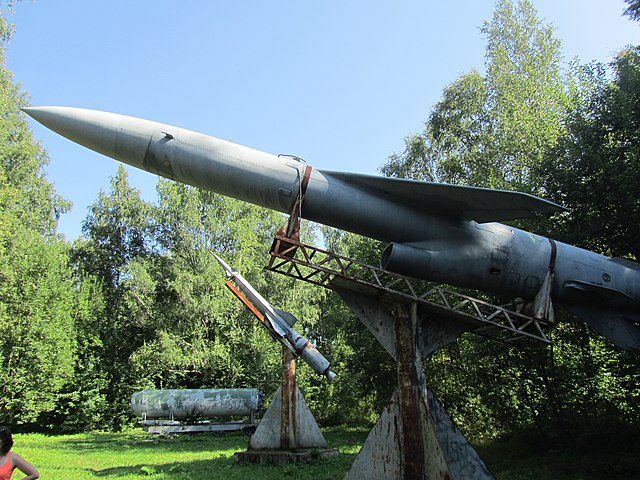
The P-5/P-6/P-35 and their derivative are a long family of large antiship/cruise missiles using for better range, a reactor and provided with electronics system for autonomy, unlike earlier generation models. For NATO they were all classed under the same identifier as SSN-3 Shaddock.
At OKB V.N. Chelomey, the P-5 intended for striking coastal targets was refined to lead to the next P-6 anti-ship complex. Work on a final homing system went in fact back in 1948, but the firing range of the first anti-ship missiles was just a few dozen kilometers. At the same time, the main surface targets designated were the aircraft carriers of the US Navy and they optionally could be destroyed by conventional warheads if necessary at 150-200 km, while being able to not be disturbed by weather or night conditions in operation and better resist anti-missile defense systems.
With the advent of new F-4 Phantom equipped with the air-to-air AIM-7 Sparrow (capable of destroying large missiles), and carrier-based AWACS E-2A Hawkeye the US CBG defense depth went up to 250-300 km. As a response the Soviet staff wanted a new generation of anti-ship missiles with long range, several hundred kilometers and the features above.
Design genesis started at Reutovo, near Moscow under V.N. Chelomey in 1956 and setup a goal of more than 300 km, in order to hit an aircraft carrier strike group beyond the danger zone. The anti-ship missile system was to have a new control system for better accuracy whereas carrying a payload massive enough (either nuclear or conventional with high-explosive fragmentation warheads) to cripple surface targets of all classes, from Supercarriers to frigates.
The first reconnaissance-strike system with datalink

The P-6 complex was developed by NII-49 (later Granit) headed by N.A. Charin and part of it was to develop a system that can provide the equvalent of a reliable reconnaissance and target designation beyond the horizon, and to not expose a long range converted bomber, the usual solution until then, the Kyiv Research Institute of Radio Electronics (now “Kvant”) under chief designer I.V. Kudryavtsev developed the “Success” system, to be carried by Tu-16RTs and Tu-95RTs used by the Navy. The new aviation radar system detected detecting sea targets at long range and transmitted data to ships, where data processing was carried out, and target designations issued to the missile system. This combined reconnaissance and strike system was, for Soviet experts, a world’s first, and could combine submarines as well.
The system solved the problem of controlling flight of several missiles per salvo (vital in the operating mode of the submarine), as well as guiding them to targets using radar sight. If several targets were located, provide the ability to selectively destroy them by radar image transmission to the submarine’s display, from the missile own sensors. And in return transmitting commands to select specific targets on the fly.
Modus Operandi
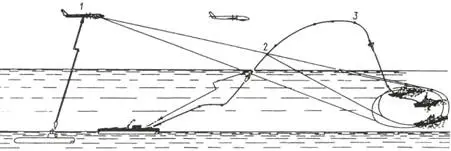
In the end, the system developed for the ECHO II worked as follows: The submarine located in a given area, after receiving combat order to use its missile, surfaced to periscope depth, established communication with a reconnaissance and target designation aircraft, transmitting radar information about detected surface targets. This information was displayed on the operator’s console aboard, and established a target designation analysed by the ship commander, which pointed out targets by priority and asking in return its precise coordinates (bearing and range). This data was entered into the missile control system, then transmitted to one of several missiles. The expected probability of detection by the missile’s radar sight were assessed as well.
The the decision to fire is taken, pre-launch preparations made, the submarine then surfaces when ready and fires a salvo of four, followed by another if required, but the doctrine was to keep half in reserve as the situation evolved.
The flight control of each missile in a salvo is using guidance signals emitted by the single operator, using bearing marks on the radar display. In case deviation of the mark, the operator resent data corrections to the missiles, and when the later eached the estimated range calculated by the onboard computer in the control system, data is received by the own radar sights of the missiles via secured radio channel transmission, broadcasting the information. The target is then determined precisely, and at the operator’s command, the missile is switched to homing mode, going rom altitude to a gentle dive a few kilometers before the target, and then follows the “terrain” at low altitide.
A significant disadvantage of the P-6 was its surface launch inherited from the ECHO I. The time spent surfaced was even much longer than for the Project 659 boats, as control from the ship was needed alla along the flight to the target, until captured by its seeker. But it was on the last miles. Despite this obvious drawback, the P-6 brought to the Soviet fleet a true advantage against large enemy surface ships, at least on paper. Indeed, the enemy’s detection was likely due to the large size of the missile, and their speed (mach 0.9) made them prone to counter-measures, notably interception at long range.
Design of the class
Hull and general design

Structurally, they kept the same hull as the previous Pr.659 double-hulled, twin-shaft type, conning tower enclosure and superstructure. The pressure hull, made of AK-25 steel was 22-35 mm thick. It ended at both ends in reinforced cones, divided internall by bulkheads into 10 compartments:
1–Torpedo compartment;
2-Crew quarters and batteries, wardroom;
3-Missile control post
4-Central post;
5-Diesel generator;
6–Reactors room;
7–Main turbines;
8-Turbogenerators, electric motors, distribution;
9–Crew quarters;
10-Stern torpedo Room.
The framing was made of symmetrical strip-bulb, welded T-profiles 240 mm thick with spacing of 600 mm between them. The bulkheads were made of AK-25 steel, 10 mm thick. The missile firing process needed a compensation system with pumps and seawater replacement tanks. The outer hull was framed and wrapped in lighter SW steel 4-16 mm. Its surface was covered with an anti-hydroacoustic coating. The conning tower comprised a serie of periscopes, radar masts, antenna with rotating masts and radiators.
Powerplant
The Main power plant was the same as the ECHO I boats, rated for 35,000 hp, and identical to Project 627 (November), 658 (ECHO I) and 659 (HOTEL) projects, so virtually no changes were made in that area. But this also means the same issues were repeated, betwene poor manufacturing standards and conception. Accidents related to the powerplant were many during their career, some extremely acute (see below). The power plant (35,000 hp) included two reactor VM-A (2×70 mW), two steam turbines and two main turbo-gear units 60-D1. There were two diesel generators DG-400 (diesels M-860) and two electric creeping motor PG-116 (2×900 hp).
Armament
The main core reason behind the Project 675 was their new abaility to target US ships with far more accuracy, still using a cruise missile, not only radar-homing and flying at 220 nautical miles from Mach 0.98 to Mach 1.2 in later versions. The 2200-lb (one ton) conventional warhead was deemed sufficient to cause a blast large enough to cripple an aicraft carrier, by default of sinking one. But the system was at this stage, dependend of others, cueing by a radar-equipped maritime patrol aircraft, then taking in charge by an operator onboard the launcher submarine, and only terminal homing by a radar seeker. It was also vulnerable due to its high altitude and slow speed. It appeared also later to NATO analysts that its radar seeker was vulnerable to jamming and deception systems such as chaff.
8x P6/P6M Missiles
The P6 were carried by eight containers located along the outer hull, classed in four section, each comprising two launchers. The operating mode had been described in detail for the P-5 on Project 659 boats, so we will not exposed there here. Just note, as precised above than untlike Project 659 which launched their missiles and then submerged after the salvo, Project 675 boats had to remain surfaced all along the missile flights to targets. At their max range that means 30 to 45 minutes, in an always evolving radar detection bubble by the enemy. The P-6 was also shared by the Project 651 (NATO Juliett) diesel-electric submarines. This drawback was corrected later in their career whe these ECHO II were modernized with the new SSN-12 notably, using a “fire and forget” principle.
The Project 675 SSGN were trumpeted by USSR as the world’s first to fire and guide a missile salvo while selecting targets in an enemy ship formation underway. These SSGN were intended to take position around the estimated location of a USNB CBG, receive position data from the reconnaissance aircraft, and on order, surface to fire two salvoes of four missiles each, using the antenna installed in the deckhouse fence forward, rotated 180° into its working positio to guide the missile until homing took turn.
The time between the two salvoes was 12 minutes, but even in this lap, the submarine could interrupt the procedire and sive at any moment, even with open lids, but no more than three missile containers. The fast tanks compensated for the loss of buoyancy and when underwater, the spent containers were submerged. So two salvoes could be launched in 20-30 minutes, allowing on paper to control up to twelve P-6 missiles at a CBG from various ECHO II around it, coming from any angle. This was considered the best tactic to overcome the densest air defense in the 1960s. On paper, four SSGNs totalled 32 missiles, more than enough to gve real chances of hitting the carrier at the center of the Carrier Battle Formation (CBG).

Caracteristics:
The P6 measured 10.20 meters (SS-N-3a/b) or 11.75 meters (SS-N-3c) for the same diameter of 0.98 meter and wingspan 5 meters, total weight 5,400 kg.
They carried a one ton conventionalhigh explosive Warhead or a 350 kiloton yeld nuclear warhead. Propulsion comprised 2 solid-fuel boosters and a turbo-jet sustainer for the cruise to the target, hence a limited Mach 0.9 top speed; Top effective range was 450 km for the SS-N-3a/b and 750 km for the SS-N-3c. Guidance mode used inertial mid-course through data link from the launch platform, and them homing in to the designated target.

The P-1000 Vulcan (NATO ), ultimate model installed on the ECHO II. Only Project 675MKV boats, K-1, K-134, K-22 and K-35, both in 1990 were so equipped. Previously was made the P-500 missiles upgrade (SSN-12 Sandbox).
Eight Torpedo Tubes
Torpedo armament included four bow-mounted torpedo tubes, caliber 533 mm (can be fired under 100 m) and two 400 mm TA (under 250 m) with a total of 20 torpedoes in store. Same models as for the Project 659 boats: The main tubes fired the following:
SET-65 torpedoes “Yenot-2” (1965) 533 mm Guided Electrical Torpedo with active acoustic guidance, homing range 880 yards (800 m). 3,836 lbs. (1,740 kg), 307 in (7.800 m), WH 452 lbs. (205 kg), RA 17,500 yards (16,000 m)/40 knots, Silver-zinc battery.
SET 53-61 “Alligator”: (1961) 533mm Acoustic wake following homing torpedo. WH 672 lbs. (305 kg) RA 16,400 yds (15,000 m)/55 kts or 24,000/35, Pw Kerosene-Hydrogen Peroxide Turbine
Replaced by the 53-61M early on (1970s) which had a homing system.
MGT-1 400 mm Passive acoustic homing torpedo (1961): 1,124 lbs. (510 kg), 177 in (4.500 m) WH 176 lbs. (80 kg), RA 6,600 yards/28 kts, Silver-zinc battery.
First light-weight torpedo designed to provide submarines with a cheap self-defense weapons against other US subs. Service was short however.
Sensors
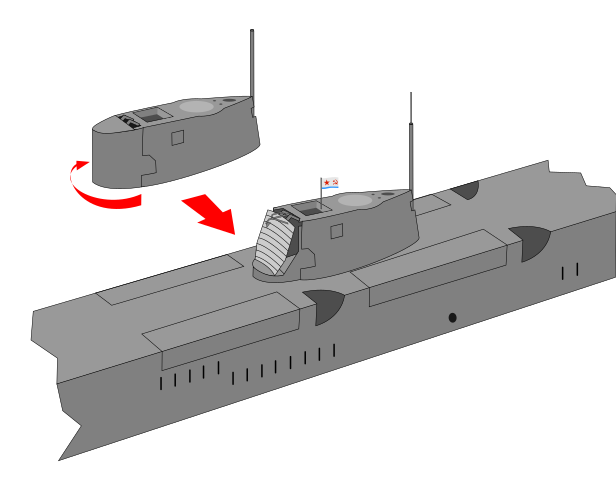
To receive target information from an aircraft system reconnaissance and target designation there was a “Success-U” radar system (reception could be carried out both in the surface and submerged position of the SSGN). The Sonar Arktika-M complex, the Sila-N-675 navigation system complex, the Mayak gyrocompass, the Lyra-11 celestial navigation system and others equipment were also part of the package. There will be an update on al these detailed systems in the future when more data is available.
⚙ Echo I specifications |
|
| Displacement | 4,500 tonnes surfaced, 5,760 tonnes submerged |
| Dimensions | 115.4 x 9.30 x 6.70 m () |
| Propulsion | 2 shafts, 2x VM-A nuclear reactors, 2 GTZA-601 geared steam turbines units 35,000 hp |
| Speed | 14 kts surfaced, 22.7 kts submerged |
| Range | Nuclear: practically unlimited but 90 days for the crew’s reserves |
| Armament (1962) | 4×2 P-5D CruM (8 P-5D), 4-533 TT (bow, 10), 2 – 400 TT (stern, 6) |
| Armament (1965) | 4 x 2 P-6 or P-6M CruM (8 4K88 or 4K48) and same |
| Armament (1980) | 4 x 2 P-500 Basalt missiles (SSN-12 Sandbox), Later P-1000 Vulcan |
| Sensors | RLK-101 Albatros radar, MG-200 Arktika-M, Plutoniy, MG-10 Kola, MG-13 sonars, Nakat ECM suite |
| Test depth | 300 m (984 ft), practical 240 m |
| Crew | 104-109 men (including 29 officers) |
Modifications

Project 675 boats were one of the most actively modernized ships of the Soviet fleet. First an improved modification of Project 675 was Project 675K, on which the “Kasatka” device was installed, which provided reception and processing targeting data from artificial Earth satellites. According to this project, KrPL K-47, K-125 and K-48 were modernized.
In 1965, all earlier boats were updated to the P-6 or P-6M missiles standard. Between 1969 and 1975, some received the new MG-200 Arktika-M sonar removed and MGK-100 Kerch’ sonar installed instead.
In 1970, K-170 alone was miodified under Project 675N with eight P-6/P-6M SSM missiles and the Argon radar as well as a tailored diving equipment and divers for spec ops.
In 1974, K-47 and K-125 were reconverted under Project 675K with their MG-200 Arktika sonar and Nakat ECM suite removed and replaced by a MGK-100 Kerch’ sonar, the new Nakat-M ECM suite, as well as the Kasatka-B satellite guidance system.
In 1975, K-28 was converted under Project 675MU with the same eight 8 P-6 or P-6M SSNs removed while were removed their Argon radar, MG-200 Arktika sonar and Nakat ECM suite and instead four twin P-500 Bazalt SSM (8 4K80) missiles were installed. To assist them, the new Argon-K radar was installed, as well as the MGK-100 Kerch’ sonar, the Nakat-M ECM suite, but also the Uspekh-U targeting system. Full displacement rose to 5,015 tonnes.
In 1977, K-204 and in 1978, her sisters K-557, K-184, K-175, joined later in 1982, by K-62, K-144, K-104 and in 1984, K-23, in 1986, K-56, were all converted under Project 675MK: Their missiles were removed, as well as their Argon radar, MG-200 Arktika sonar, Nakat ECM suite and like the Project 675MU they obtained the same four twin P-500 Bazalt SSM and same radar and electronics suite, as well as the Kasatka-B satellite guidance system while displacement rose to the same 5,015 tonnes standard and 6,420 tonnes fully loaded.
By December 1980 KS-86 was converted to carry a Project 1851 (Paltus-class) submarine, special purpose mini-submarine, with 2 completed, AS-21 and AS-35, 300 tons 98 feet (30 m), nuclear power 3,800 feet (1,200 m) capability. Designed by Sergei Bavilin (Project 865/Piranya).
In 1985, K-1 and in 1989, K-134, as well as in 1990, K-22 (renamed Krasnogvardeets) and her sister K-35 so four, were converted and modernized under Project 675MKV, the latest of all upgrades to the ECHO II type to keep them relevant pas the end of the cold war. Like earlier for her sister, all their now obsolete P-6/P-6M SSM and suite were removed and replaced by the same four twin missiles arrangements, this time with the latest P-1000 Vulkan SSM (3M70) instead of the P-500 Basalt. Also, for the first time, they were given sextuple Strela-3M SAM mount, and gained the latest electronics: The Argon-675MKV radar, MGK-100 Kerch’ sonar, Nakat-M ECM suite as well as the Kasatka-B satellite guidance system. They became without surprise the heaviest of the ECHO types at 5,415 tonne standard and 6,700 tonnes submerged while their crew comprised 109 officers and ratings.
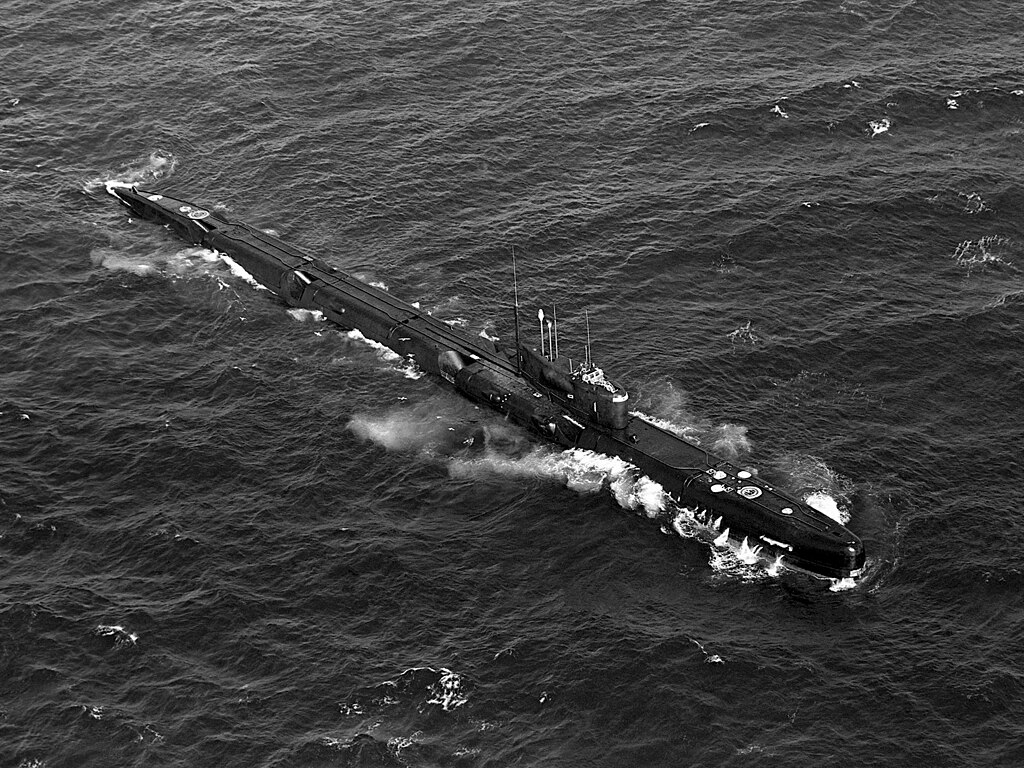
Modifications thus were many, in several tranches during the cold war, and involved the use of other missile systems and updated target designation systems. 675MK had a replacement of their cruise missiles of the P-6 complex with the new P-500 (Basalt), quite a leap forward in performances. The “Success” target designation system was installed on project 675MU later.
Project 675MKV were the first to adopt the Vulcan complex cruise missiles, also a massive upgrade in performances. They were a real concern for USN CBGs at the time.
K-86 was modernized according to Project 675N, submarine-carrier for UUV or underwater vehicles as said above. Her subsequent deployments remained classified to this day. It is believed she could have done underwater cable taping or sabotage actions under these or pipelines.
Some sources mention the projects 675U (supposedly only for P-6 missiles, although perhaps we are talking about modernization for missiles in the P-6M (4K48) version) and 675M – unrealized project of a submarine with a nuclear power plant on liquid metal.
The ECHO II in action 1963-1994
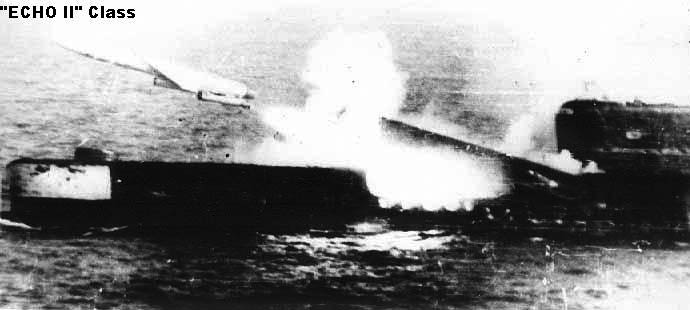
The construction of Project 675 boats was carried out in Severodvinsk and Komsomolsk-on-Amur. The lead Severodvinsk ship became part of the Northern fleet in 1963. This was preceded by state tests, which ended with the successful execution of a four-missile salvo. Project 675 boats were actively used in the Northern and Pacific fleets. They carried military service in the Mediterranean Sea and the Indian Ocean. Although the effectiveness of these submarines was low due to the surface launch of anti-ship missiles and the need for remote control of them, and also because of the vulnerability of missiles to missile defense systems of large surface ships. Negative on the effectiveness of the SSGN project 675 was affected by their significant noise due to the high vibration activity of the mechanisms of the nuclear power plants of the first generation nuclear submarines and the high rotation speed propellers, and also due to the presence of poorly streamlined gas outlet baffles.
Notes:
-Identifications numbers as usual for soviet subs were completely random as usual to confuse NATO intel, and some changed numbers during their careers in addition.
-The decommission dates given are not indicative of their scrapping date, which usually happened long after a reserve and storage period for about ten years or more. Next the recycling and storage of contamined material in safe areas and conditions (under western inspections in the 2000s) was done by a Yard, and its process went on almost for all ECHO I/II boats until 2022-2023.
-Unlike for the ECHO I i will not dwelve into detail of their career, sometimes quite long, over 25 years, at least on paper, because in reality their yealry sortie rate was not impressive and overhauls and modernization/conversions ate a lot of space in their useful service life. Typically a sortie would last for 90-150 days at best. I will thus focus on the most outstanding events in their career. For full career examples, check the ECHO I article.
 K-166
K-166
K-186 was laid down at SEVMASH, Severodvinsk on May 30, 1961, launched on September 6, 1962 and completed on October 31, 1963, in service with the Northern Fleet. She was decommissioned in 1989, sold for scrapping.
 K-104
K-104
K-104 was laid down at SEVMASH on January 11, 1962 and launched on June 16, 1963, completed on December 15, 1963, in service with the Northern Fleet. Converted 1978 as Project 675MU. Decommissioned in 1990.
 K-170 (K-86, KS-86)
K-170 (K-86, KS-86)
K-170 was also from Severodvinsk, laid down on May 16, 1962, launched on August 4, 1963 and completed on December 26, 1963, assigned to the Northern fleet. In 1970, K-170 alone was converted under Project 675N with a tailored diving equipment and divers for spec ops. They were lodged into the reconverted containers. She was decommissioned in 1991.
 K-175
K-175
K-175 was laid down at Leninskiy Komsomol Shipyard in the Pacific yard Komsomolsk on Amur by March 17, 1962 and launched on September 30, 1962 then completed, commissioned on December 30, 1963 and assigned to the Pacific Fleet. Converted as Project 675MU in 1978 (Sandbox missiles). On November 1986 she suffered an explosion in the reactor compartment, causing radioactivity discharge, contamination of a large syrface around the submarine, but fortunately there were no fatalities. She was repaired, core reactor changed, returned into service. Decommissioned in 1990.
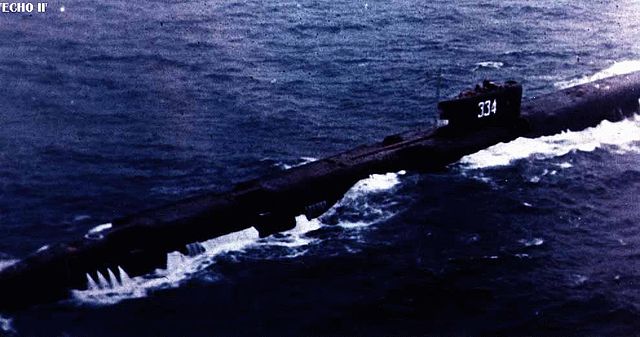
 K-184
K-184
K-184 was laid down also at Leninskiy Komsomol on February 2, 1963, launched August 25, 1963, commissioned March 31, 1964 and assigned to the Pacific Fleet. In 1978 she was converted as Project 675MK with P-500 Bazalt missiles (SSN-12 Sandbox). Decommissioned in 1990.
 K-172
K-172
K-172 was laid down at SEVMASH on August 8, 1962, launched on December 25, 1963 and completed on July 30, 1964, assigned to the Northern Fleet. On 26 June 1989, while renamed K-192 she suffered a serious reactor accident, leak in the first loop of the starboard reactor while off Bear Island in the Barents Sea. The crew was mildly irradiated, but treated back home, no fatalities. As usual the staff was sacked, and the blame fell on the technical team tasked of the maintenance. No repairs were done. She was decommissioned in 1990.
 K-47 (B-47)
K-47 (B-47)
K-47 was built at SEVMASH, laid down on August 7, 1962, launched February 10, 1964 and commissioned on August 31, 1964, thena assigned to the Northern Fleet. On 24 September 1976 while underway in the North Atlantic a fire broke out in compartment 8, the living quarters, later attributed to a short circuit. 3 died of carbon monoxide poisoning and the compartment was shut, fired was extinguished. She resuemed service and was decommissioned in 1994–95.

 K-1
K-1
K-1 (not the first of the serie, this apparent identifier randomness was to confuse NATO analysts) was laid down at SEVMASH in Severodvinsk on January 11, 1963 and launched on April 30, 1964, then completed on September 30, 1964 and assigned to the Northern Fleet. On 20 August 1973 she struck the Hagua Bank in the Caribbean Sea under 120 metres (390 ft) at 16 knots (30 km/h) after a nagigation error. Her bow was badly damaged but she was repaired and resumed service. No casualty. In 1989 after being converted as 675MKV (P-1000 Vulkan SSM), whe suffered a reactor accident, no calsulaties, but given that date, she was not repaired and placed in reseve instead, then she was Decommissioned in 1992, scrapped and recycled.
 K-28 (K-428)
K-28 (K-428)
K-28 was laid down at SEVMASH, Severodvinsk on April 26, 1963, launched on June 30, 1964 and commissioned by December 16, 1964. She was assigned to the Northern Fleet. In 1975, K-28 was converted under Project 675MU (P-500 Bazalt SSM upgrade). She was decommissioned in 1990.
 K-35
K-35
K-35 was laid down at SEVMASH, Severodvinsk, on January 6, 1964, she was launched on January 27, 1965 and commissioned on June 30, 1965. Assigned to the Northern Fleet. 1990, converted as Project 675MKV. RAS. Decommissioned 1993.
 K-189 (K-144)
K-189 (K-144)
K-189 was laid down at Leninskiy Komsomol Shipyard, Komsomolsk-na-Amure on April 6, 1963, launched May 9, 1964 and commissioned on July 24, 1965. She was assigned to the Pacific Fleet. Converted in 1978 as Project 675MU. Decommissioned in 1991.
 K-74
K-74
K-74 was laid down at SEVMASH, Severodvinsk on July 23, 1963, launched September 30, 1964 and commissioned on July 30, 1965, assigned to the Northern fleet. RAS. She was decommissioned on 1992.
 K-22
K-22
K-22 was laid down at SEVMASH on October 14, 1963, launched November 29, 1964, commissioned August 7, 1965 and assigned to the Northern Fleet. On 28 August 1976 she collided with frigate USS Voge in the Mediterranean. Both were seriously damaged. K-22 had her missile container No. 1 destroyed, extension devices, fin structure mushed. She had to stay in Kithira Yard in the Aegean Sea for emergency repairs. The frigate had her stern badly mushed too, her machinery stopped, and she was towed to Crete for the same. She was repaired, renamed Krasnogvardeets, and in 1990 converted as Project 675MKV. She was Decommissioned 1995.
 K-90 (K-111)
K-90 (K-111)
K-90 was laid down at SEVMASH, Severodvinsk on February 29, 1964, launched April 17, 1965, commissioned on September 25, 1965, assigned to the Northern Fleet. RAS, she was decommissioned in 1989.
 K-31 (K-431)
K-31 (K-431)
K-31 was laid down at Leninskiy Komsomol Shipyard on January 11, 1964, launched on September 8, 1964 and commissioned on September 30, 1965, assigned to the Pacific Fleet. On 10 August 1985, while renamed K-431 she experienced a reactor explosion while refueling at Chazhma Bay shipyard in the Sea of Japan. 10 dead and 300 men from rescue parties received radiation piosining, causing more deceases later. It was the worst accident of the whole class. She was inspected and not retured from service, declared a total constructive loss, decommissioned in 1987.

 K-116
K-116
K-166 was ordered to SEVMASH yard, laid down on June 8, 1964, launched June 19, 1965 and completed by October 29, 1965. She was assigned to the Pacific fleet. On 2 July 1979 she suffered a reactor accident, typical of the serie, with a leak of core coolant, port reactor while underay in the the Bay of Vladimir, Sea of Japan. Part of the crew were seriously irradiated, but the sub managed to return to base with less harm than the infamous K-19 (Hotel class). No fatalities but the reactor core was changed, and still she was decommissioned early, in 1985.
 K-57 (K-557)
K-57 (K-557)
K-57 was laid down at Leninskiy Komsomol Shipyard, on October 19, 1963, launched on September 26, 1964 and commissioned on October 31, 1965, assigned to the Pacific Fleet. Renamed K-557, she was converted in 1978 as Project 675MK. She was decommissioned in 1992.
 K-125
K-125
K-125 was laid down at SEVMASH, Severodvinsk on September 1, 1964, she was launched on September 11, 1965 and commissioned by December 18, 1965, assigned to the Northern Fleet. She was Decommissioned in 1991.
 K-48
K-48
K-48 was laid down at Leninskiy Komsomol on April 11, 1964, launched June 16, 1965, commissioned on December 31, 1965, assigned to the Pacific. RAS. Decommissioned 1990.
 K-128 (K-62)
K-128 (K-62)
K-128 was laid down at SEVMASH, Severodvinsk by October 29, 1964, launched December 30, 1965 and commissioned on August 25, 1966. Assigned to the Northern Fleet. In 1978 converted as Project 675MU. She was decommissioned in 1990.
 K-56
K-56
K-56 was laid down at Leninskiy Komsomol Shipyard on May 30, 1964, she was launched on August 10, 1965 and commissioned on August 26, 1966, assigned to the Pacific Fleet. On 14 June 1973 she collided with the Soviet large refrigerating trawler Akademik Berg. Her bow was completely destroyed, and flooding meant 27 drawned into compartments I and II. She was repaired and resumed service. In 1986 she was converted as Project 675MU. She was eventually decommissioned in 1992.
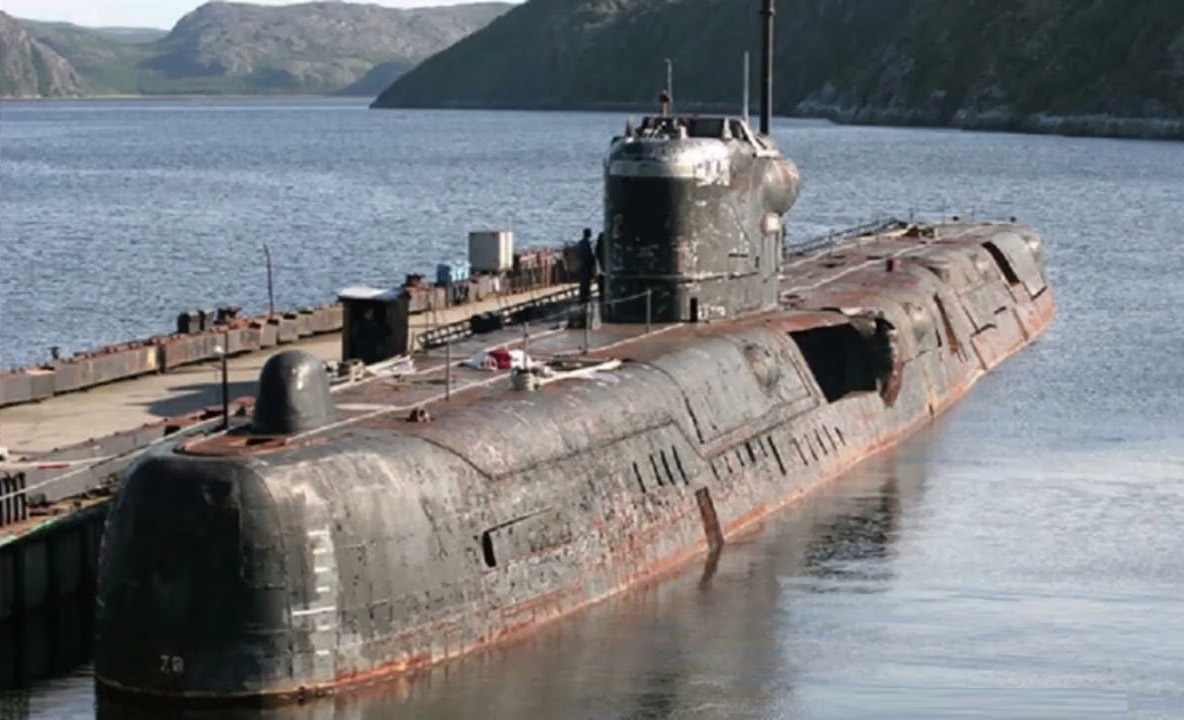
 K-131 (B-131)
K-131 (B-131)
K-131 was laid down at SEVMASH on December 31, 1964, launched on June 6, 1966 and completed on September 30, 1966, assigned to the Northern Fleet. On 18 June 1984, a fire broke out in compartment 8 due to poor safety standards by a working electrician while in the Barents Sea. 14 dead. She went back home and was repaired, resumed service until decommissioned in 1994.
 K-10
K-10
K-10 was laid down at Leninskiy Komsomol Shipyard on October 24, 1964, launched September 29, 1965, commissioned on October 15, 1966, assigned to the Pacific Fleet. RAS. She was decommissioned in 1989.
 K-135
K-135
K-135 was built at SEVMASH, Severodvinsk, laid down February 27, 1965, launched July 27, 1967, commissioned November 25, 1966, assigned to the Northern Fleet. RAS. Decommissioned 1988.
 K-94 (K-204)
K-94 (K-204)
K-94 was laid down at Leninskiy Komsomol on March 20, 1965, she wa slaunched on May 20, 1966 and commissioned on December 27, 1966. She was assigned to the Pacific fleet. In 1977 she was the lead bot for the Project 675MK conversion programme (P-500 Bazalt SSM). She was Decommissioned in 1992.
 K-108
K-108
K-108 was laid down at Leninskiy Komsomol Shipyard on July 24, 1965, she was launched on August 26, 1966 and commissioned by March 31, 1967, assigned to the Pacific Fleet. On 20 June 1970 she collided with USS Tautog in the Sea of Okhotsk under 45 metres (148 ft). Her outer hull was damaged around compartments 8 and 9, while Tautog’s sail was mushed, with the access trunk flooded. No fatalities. K-109 was decommissioned 1990 for scrapping.
 K-7
K-7
K-7 was laid down at Leninskiy Komsomol by November 6, 1965, launched September 25, 1966, commissioned September 30, 1967, asigned to the Pacific. RAS. Decommissioned 1990.
 K-23
K-23
K-23 was laid down at Leninskiy Komsomol on February 23, 1966, launched June 18, 1967, commissioned on December 30, 1967, assigned to the Pacific fleet. Converted 1984 as Project 675MU. Decommissioned 1992.
 K-34 (K-134)
K-34 (K-134)
K-34 was laid down at Leninskiy Komsomol on June 18, 1966, launched September 23, 1967, commissioned on December 30, 1968, assigned to the Pacific fleet. Renamed K-134, converted in 1989 as Project 675MKV. RAS. Decommissioned in 1994, sold for scrap.
Read More/Src
Books
Vilches Alarcón, Alejandro A. (2022). From Juliett to Yasen. Europe @ War (22). Helion & Co.
V. P. Kuzin, V. I. Nikolsky “USSR Navy 1945—1991” IMO St. Petersburg 1996
V. E. Ilyin, A. I. Kolesnikov “Submarines of Russia: An Illustrated Directory” Astrel Publishing House LLC 2002
“History of domestic shipbuilding” vol. 5 St. Petersburg Shipbuilding 1996
A. N. Gusev “Submarines with cruise missiles” St. Petersburg “Galeya Print” 2000.
Submarines of Russia Volume 4, part 1. Central Design Bureau MT “Rubin” St. Petersburg. 1996.
Reference information from S. S. Berezhnaya “Nuclear submarines of the USSR and Russian Navy” MIA No. 7 2001.
V.P. Kuzin, V.I. Nikolsky “USSR Navy 1945-1991” IMO St. Petersburg 1996
Central Design Bureau No.1 & Central Marine Equipment Design Bureau Rubin, Sankt Peterburg, 1996
Friedman, Norman (1997). The Naval Institute guide to world naval weapons systems, 1997-1998. NIP
“Collision with Soviet submarine”. United States Department of State. 1976-08-29.
“Atomnaya Podvodnaya Ehpopeya”; L. Osipenko, L. Zhiltsov, N. Mormul; Moscow, 1994
Hampshire, Edward (2018). Soviet Cruise Missile Submarines of the Cold War. Osprey Publishing.
Pavlov, A. S. (1997). Warships of the USSR and Russia 1945–1995. NIP
Polmar, Norman & Moore, Kenneth J. (2004). Cold War Submarines: Design and Construction. Washington, D. C.: Potomac Books.
Polmar, Norman & Noot, Jurrien (1991). Submarines of the Russian and Soviet Navies, 1718–1990. NIP
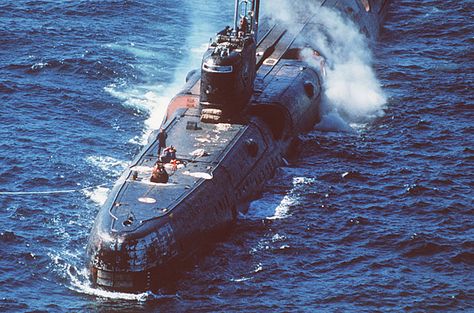
Links
navypedia.org/
nuke.fas.org/ ss-n-3.htm
web.archive.org/ ship.bsu.by
nuke.fas.org/
en.wikipedia.org/ Echo-class_submarine
web.archive.org ship.bsu.by/ship/102191
en.topwar.ru/ projekt-675-echo-ii-class
ckb-rubin.ru/ 1955_1982
on ru.wikipedia.org/
russianships.info
navweaps.com Russian_post-WWII
on en.missilery.info/missile/p35
nuke.fas.org/
Pr.675 on deepstorm.ru
amikamoda.ru/ projekt 675
russianships.info project_659.htm
globalsecurity.org/ 659.htm
web.archive.org/ ruspodlodka.narod.ru/plark/659.htm
web.archive.org/ atrinaflot.narod.ru/
deepstorm.ru/ k151
web.archive.org submarine.id.ru/ 675
web.archive.org/ ruspodlodka.narod.ru/plark/675.htm
web.archive.org/ pilot.strizhi.info/ preserved boats photos
web.archive.org/ submarine.id.ru K83
http://www.kommersant.ru/
deepstorm.ru/ k10.htm


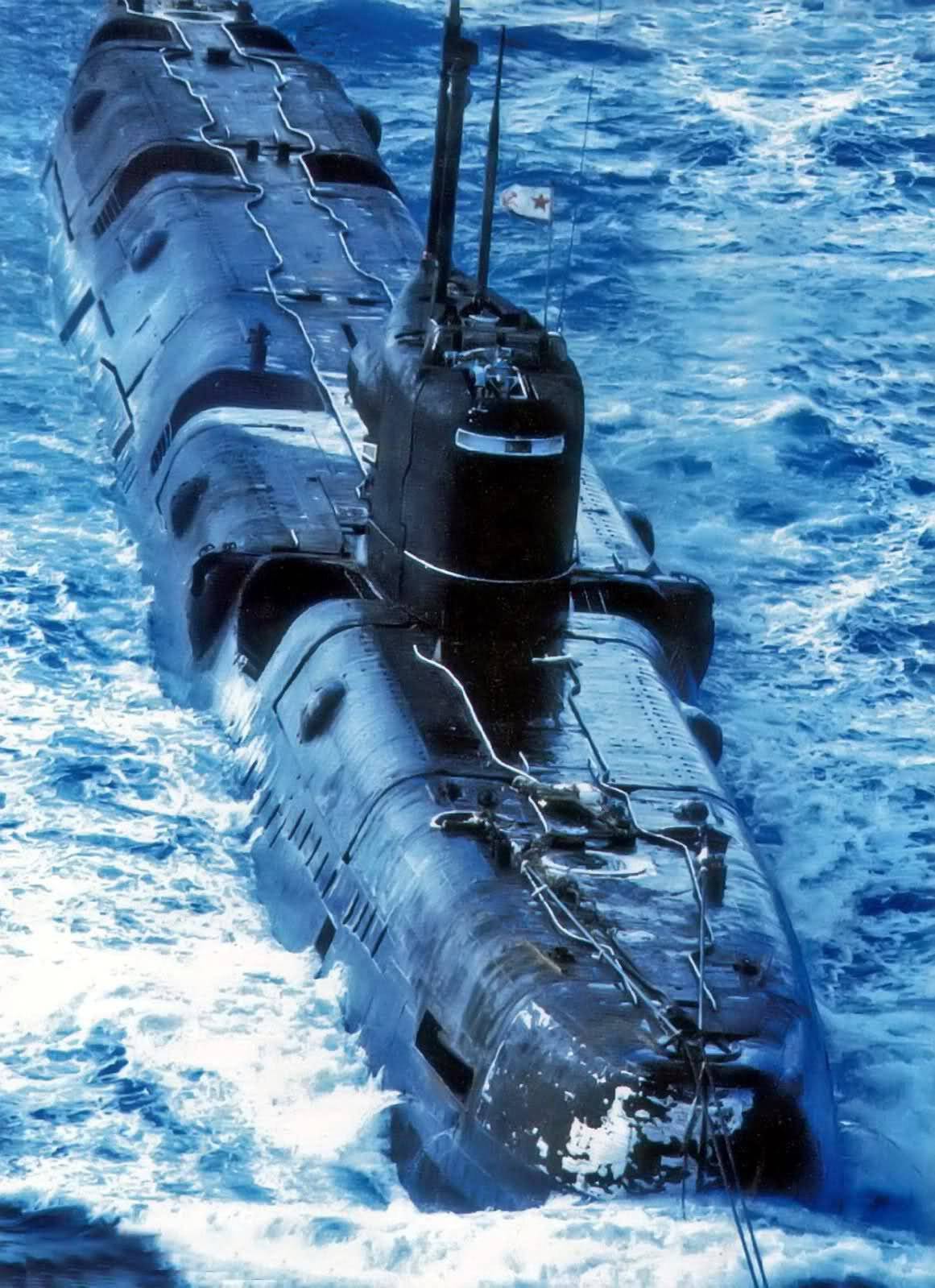
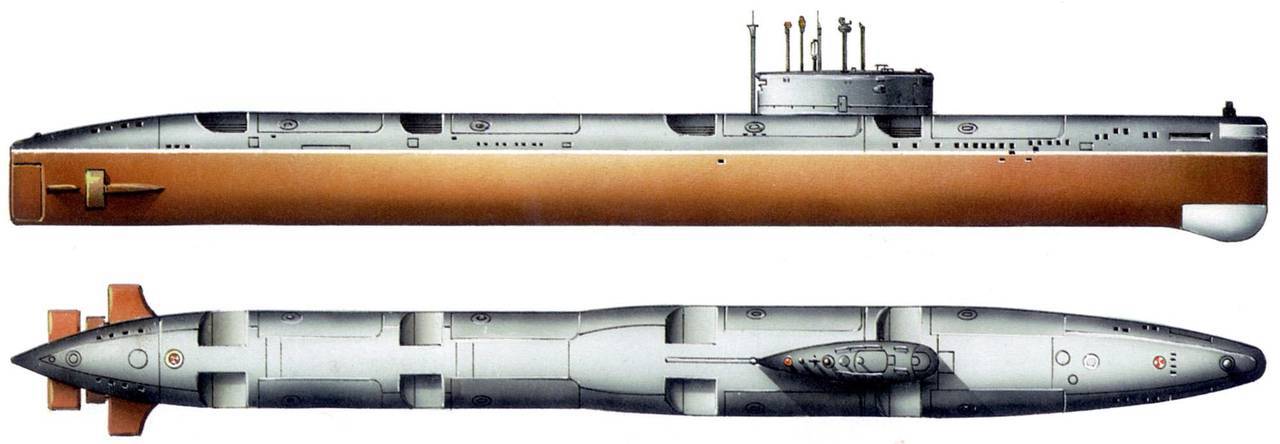
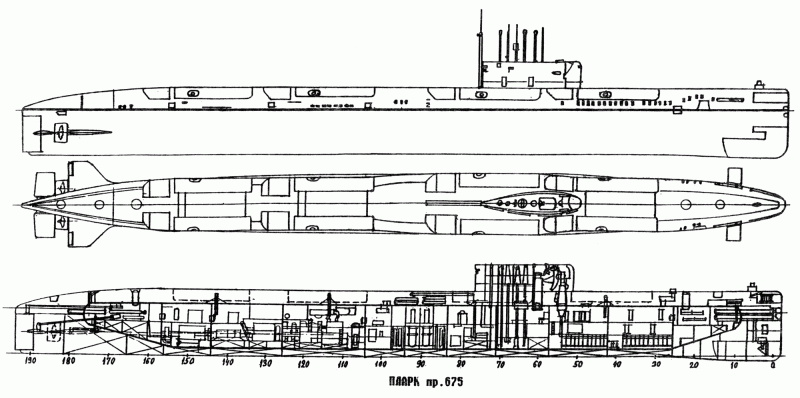


 Latest Facebook Entry -
Latest Facebook Entry -  X(Tweeter) Naval Encyclopedia's deck archive
X(Tweeter) Naval Encyclopedia's deck archive Instagram (@navalencyc)
Instagram (@navalencyc)





 French Navy
French Navy Royal Navy
Royal Navy Russian Navy
Russian Navy Armada Espanola
Armada Espanola Austrian Navy
Austrian Navy K.u.K. Kriegsmarine
K.u.K. Kriegsmarine Dansk Marine
Dansk Marine Nautiko Hellenon
Nautiko Hellenon Koninklije Marine 1870
Koninklije Marine 1870 Marinha do Brasil
Marinha do Brasil Osmanlı Donanması
Osmanlı Donanması Marina Do Peru
Marina Do Peru Marinha do Portugal
Marinha do Portugal Regia Marina 1870
Regia Marina 1870 Nihhon Kaigun 1870
Nihhon Kaigun 1870 Preußische Marine 1870
Preußische Marine 1870 Russkiy Flot 1870
Russkiy Flot 1870 Svenska marinen
Svenska marinen Søværnet
Søværnet Union Navy
Union Navy Confederate Navy
Confederate Navy Armada de Argentina
Armada de Argentina Imperial Chinese Navy
Imperial Chinese Navy Marinha do Portugal
Marinha do Portugal Mexico
Mexico Kaiserliche Marine
Kaiserliche Marine 1898 US Navy
1898 US Navy Sovietskiy Flot
Sovietskiy Flot Royal Canadian Navy
Royal Canadian Navy Royal Australian Navy
Royal Australian Navy RNZN Fleet
RNZN Fleet Chinese Navy 1937
Chinese Navy 1937 Kriegsmarine
Kriegsmarine Chilean Navy
Chilean Navy Danish Navy
Danish Navy Finnish Navy
Finnish Navy Hellenic Navy
Hellenic Navy Polish Navy
Polish Navy Romanian Navy
Romanian Navy Turkish Navy
Turkish Navy Royal Yugoslav Navy
Royal Yugoslav Navy Royal Thai Navy
Royal Thai Navy Minor Navies
Minor Navies Albania
Albania Austria
Austria Belgium
Belgium Columbia
Columbia Costa Rica
Costa Rica Cuba
Cuba Czechoslovakia
Czechoslovakia Dominican Republic
Dominican Republic Haiti
Haiti Hungary
Hungary Honduras
Honduras Estonia
Estonia Iceland
Iceland Eire
Eire Equador
Equador Iran
Iran Iraq
Iraq Latvia
Latvia Liberia
Liberia Lithuania
Lithuania Mandchukuo
Mandchukuo Morocco
Morocco Nicaragua
Nicaragua Persia
Persia San Salvador
San Salvador Sarawak
Sarawak Uruguay
Uruguay Venezuela
Venezuela Zanzibar
Zanzibar Warsaw Pact Navies
Warsaw Pact Navies Bulgaria
Bulgaria Hungary
Hungary

 Bundesmarine
Bundesmarine Dutch Navy
Dutch Navy Hellenic Navy
Hellenic Navy Marina Militare
Marina Militare Yugoslav Navy
Yugoslav Navy Chinese Navy
Chinese Navy Indian Navy
Indian Navy Indonesian Navy
Indonesian Navy JMSDF
JMSDF North Korean Navy
North Korean Navy Pakistani Navy
Pakistani Navy Philippines Navy
Philippines Navy ROKN
ROKN Rep. of Singapore Navy
Rep. of Singapore Navy Taiwanese Navy
Taiwanese Navy IDF Navy
IDF Navy Saudi Navy
Saudi Navy Royal New Zealand Navy
Royal New Zealand Navy Egyptian Navy
Egyptian Navy South African Navy
South African Navy






























 Ukrainian Navy
Ukrainian Navy dbodesign
dbodesign